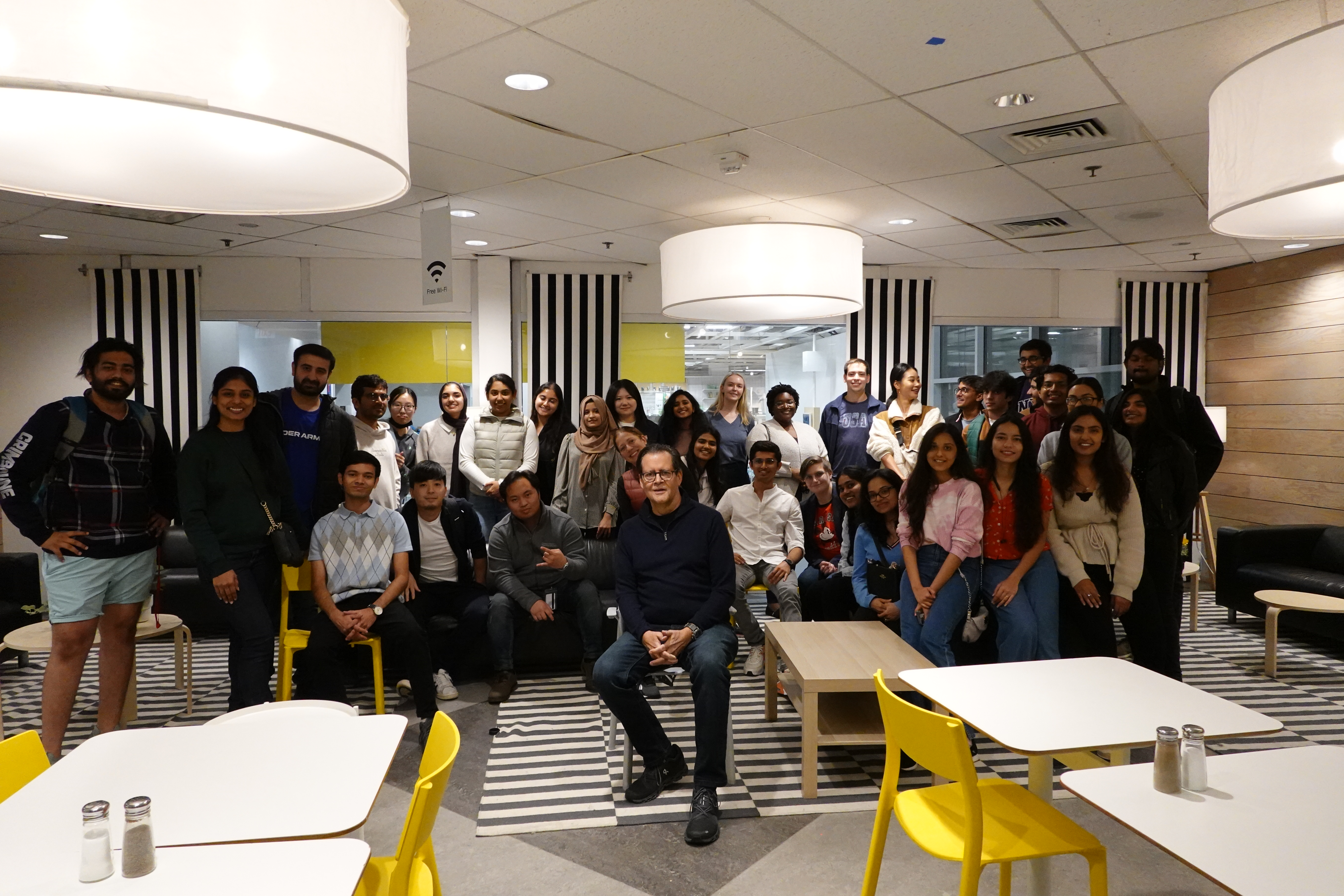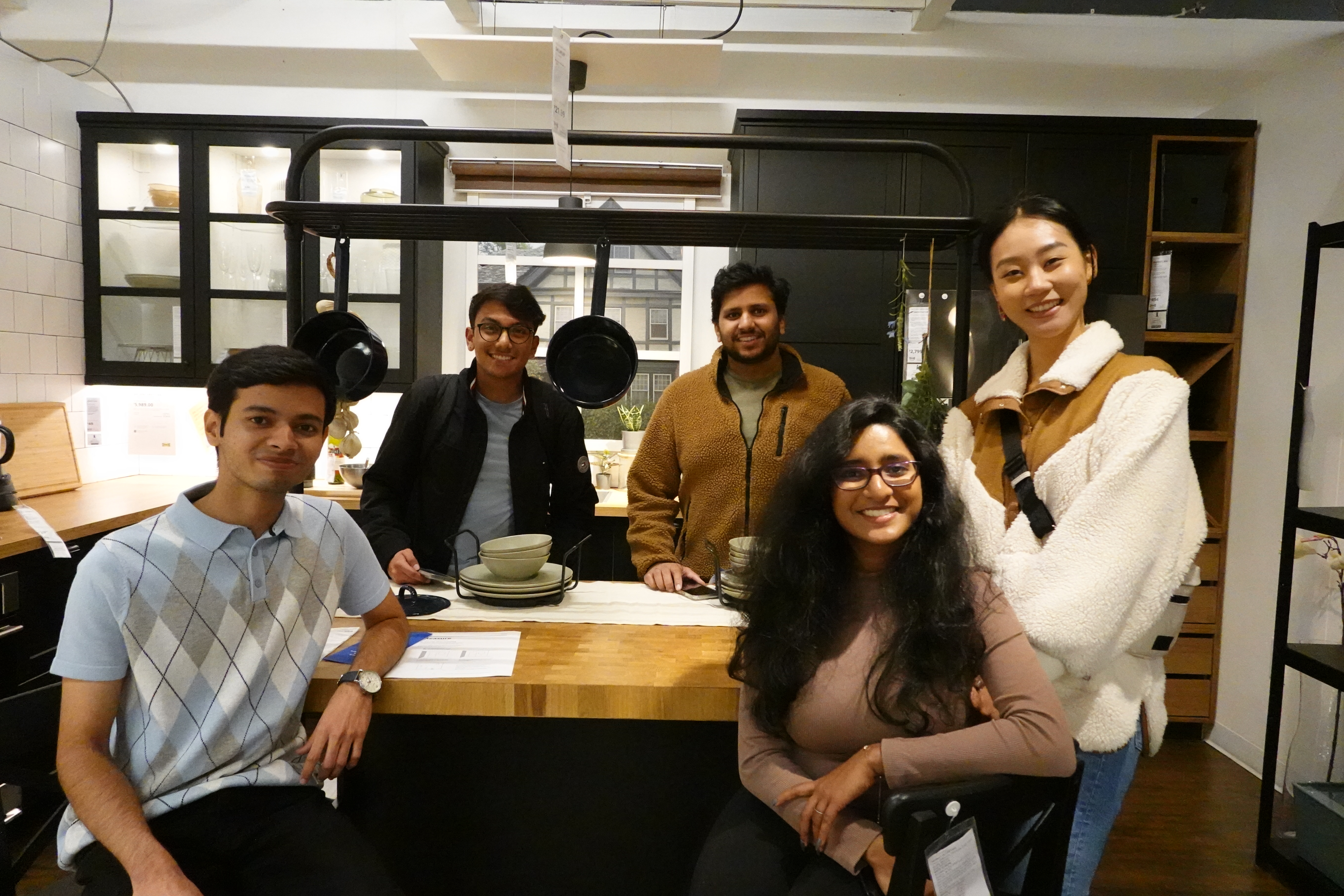For many MBS students, a fond memory of the program includes visiting the IKEA in Elizabeth with Professor Mark Burgess on a trip for his course Market Assessment and Analysis for Business and Science.
On November 3rd, 2022, Burgess’ students joined him at IKEA to learn about the company’s marketing strategies through first-hand experience. With a report of retail sales totaling EUR 41.9 billion in 2021, the company sells its iconic furniture alongside furnishings, home goods, and food items. The trip—which included a complimentary dinner—began in the IKEA cafeteria.

40 students were present, including students in the area who take the course online. Other online students visit their local IKEA. But why exactly are students taking a field trip to a furniture store?
“We are going to analyze our shopping experience, like how a normal person would experience all the stuff and products, all the setups,” said Khadijah Razi, an online student who traveled from New York.
“The big idea is experiential learning,” said Burgess. Students will apply what they have learned in their class to a real-world walk around IKEA, incorporating the experience into their final project.
“They can either do that learning about it in class and reading books,” Burgess continued, “or they can actually come here. This really pulls the whole thing together. You are able to see the merchandising, how they staff, how everything really operates, and view it somewhat as a consumer but more so like a consultant would—to really look at what seems to work, maybe what doesn’t work, and really understand how this amazing global brand can pull all this stuff together.”
Because IKEA is known for its experiential marketing tactics, an important area of study for user experience design and product management, an in-person visit is crucial.
Here are a few of the strategic methods IKEA uses to create a unique shopping experience.
- Fully-furnished rooms. IKEA includes a series of rooms on its show floor, inviting customers to walk inside. These rooms include details such as food sitting on a kitchen table, light streaming in through a window, and even children’s drawings on the fridge, all giving the impression that the customer has walked into a real home.
- Invitations to interact. Signs around the store invite the customer to interact with furniture such as sleeper sofas and sectionals with storage. Closets contain a full wardrobe of clothing, creating a sense of mystery and delight when a customer opens them.
- Brand values. A brand known for its commitment to sustainability, IKEA invites its customers to adopt these values through signage promoting recycling bins, reusable food containers, and more. This encourages customers to see these not just as objects, but as a commitment to IKEA’s sustainable way of living.
- The cafeteria. It’s no secret that IKEA’s iconic meatballs drive furniture sales. Offering customers this sensory experience creates an emotional connection between the customer and brand. After all, no one likes shopping on an empty stomach.
After dinner, students broke into groups and toured the showroom floor.
Groupmates Yihuang Li, Giriraj Patil, Muhammad Hashmi, Prathyusha Soundararajan, and Prashant Suvasia captured photos and videos of the showroom, brainstorming ideas to explore in their final project. They toured as consultants, analyzing everything from the signature maze-like showroom to how customers can provide feedback.

When asked what she enjoys most about the class, Li responded, “teamwork, most importantly. We split into groups, and then it’s amazing to closely be with other people.” She continued, “I’ve been missing this opportunity since COVID.”
“The thing that I really, truly like about this class,” added Hashmi, “is that things that I used to ignore or kind of give a side eye to are what I’m noticing now in the real world because I learned it in this marketing class. How different companies market products, and the behind-the-scenes of before our product is put into marketing, all the work that goes behind it. That’s what I’ve learned, and I’m actually using it in real life if I’m purchasing something online or in person.”
At its core, the PSM program values experiential, job-relevant instruction. That’s why we developed our robust internship and externship programs, offer executive coaching, and built our alumni network. After two years of remote instruction, it’s clear that students valued the on-site experience.
“The fact that this trip is in person helps a lot,” said Patil. “You’re with your team, you’re observing the surroundings of IKEA, and for the final presentation, it helps consolidate everything in one place.”

If you would like to read more about our trips to IKEA, check out “Experiencing the ‘IKEA Experience’” and “IKEA: A Marketing Student’s Playground.” You can also view Burgess’ video on the experience.